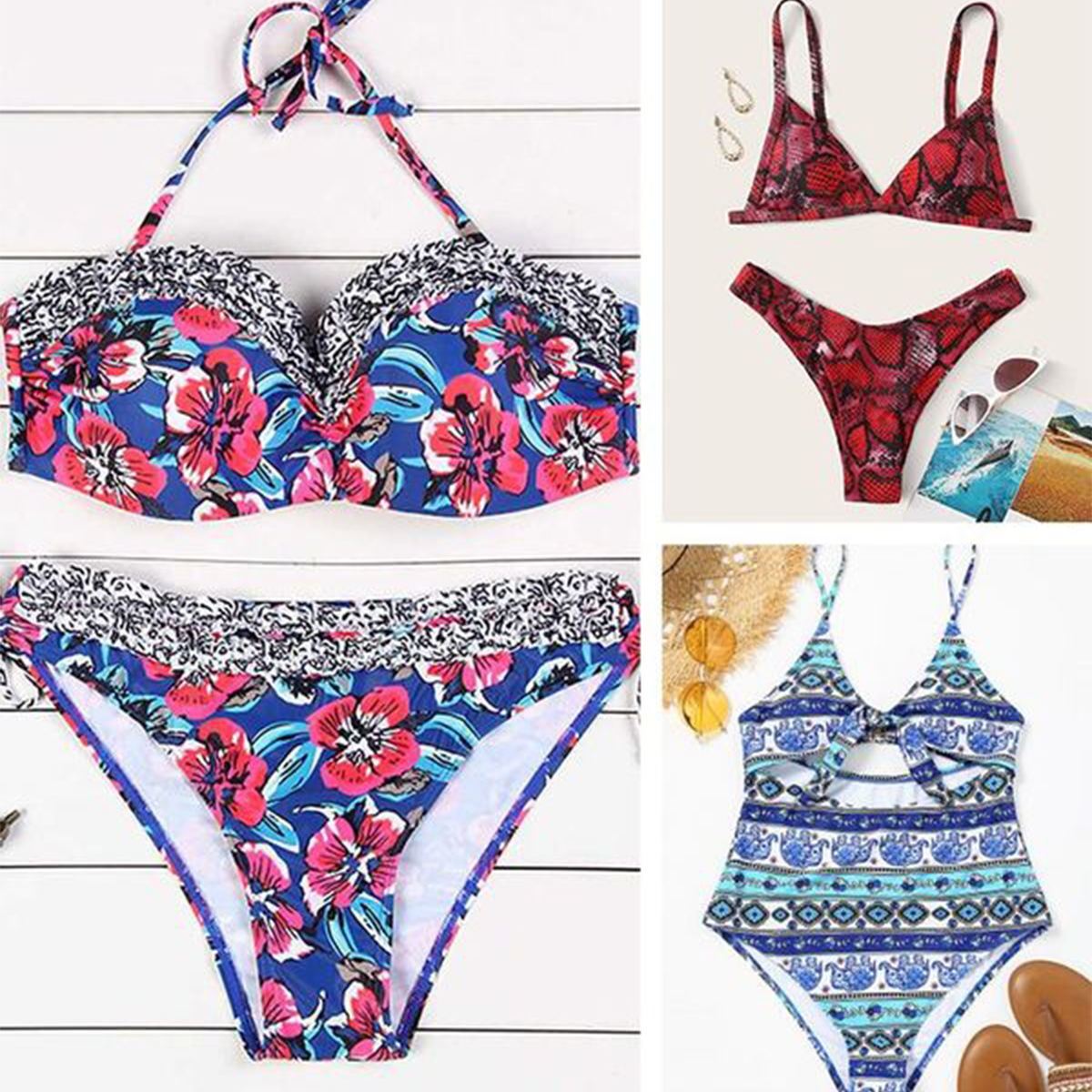The type of swimsuit that’s right for you depends on your personal tastes, including your fashion sense, preference for a one-piece or a two-piece, and the level of body coverage that makes you feel most comfortable.
What Are Swimsuits?
There are many different types of swimsuits—leisurewear made of breathable, quick-drying material. Intended for wear while swimming or performing activities near water, bathing suits are prevalent at pools or beaches. Swimsuits break down into two main categories: one-piece and two-piece swimsuits (also called bikinis). Within these two principal groups, you’ll find a multitude of different styles for every body type and fashion sense.
From the modest one-pieces of the 1920s to the advent of the bikini in the 1940s, women’s swimsuits have evolved dramatically. And fortunately, they’re a lot more flattering than they used to be.
8 One-Piece Swimsuit Styles
One-piece swimsuits generally provide full coverage for your entire midsection and varying degrees of coverage for your upper body and lower body. Here are eight different one-piece styles:
- Cover-up: You will mostly wear cover-ups out of the water—for example, at the beach or poolside—rather than in it. However, cover-ups are usually made from loose, flowy fabric that is breathable and nonabsorbent, so if you do wear one into the water, it will dry quickly.
- Long-sleeve: One-piece swimsuits with long sleeves cover your arms in addition to your entire midsection.
- Monokini: Monokinis are a hybrid of one-piece swimsuits and bikinis. The top and bottom sections connect, but they still leave most of your midsection bare.
- One-shoulder: One-shoulder swimsuits connect over a single shoulder rather than behind the neck.
- Strapless: A strapless one-piece covers your torso and rises to just below the collar bone, omitting any straps or sleeves that would otherwise go over your shoulders.
- Swim dress: Swim dresses are swimsuits designed to look and feel like dresses made with nonabsorbent, moisture-wicking materials.
- V-neck: V-neck swimsuits vary in terms of how deeply the neckline plunges, so you will see some with lower necklines and others with higher necklines.
- Wetsuit: A wetsuit is a good option if you plan to swim in cold waters since it fits closely, acting like a second skin to help you retain warmth. Many wetsuits have long sleeves and cover a person’s entire legs, while others might have short sleeves and shorts or high-cut bottoms. Some surfers wear a rash guard—a special kind of top designed to prevent chafing—under their wetsuit, too.




